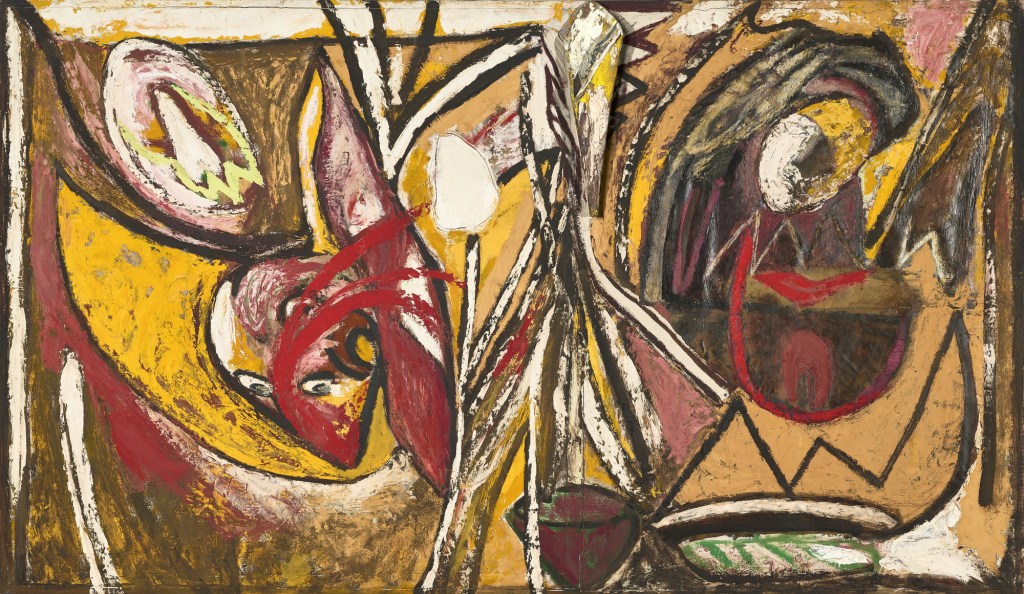Last week, in an unprecedented move, a Swiss auction house sold an artwork solely authenticated by artificial intelligence (AI).
Germann Auction House in Zürich partnered up with Switzerland-based AI authentication company Art Recognition to confirm the provenance of a watercolor by Russian artist Marianne von Werefkin. It sold for just under $17,000, almost double its high estimate of $9,000, on November 23.
Art Recognition authenticated two other works in the same auction, but human experts also confirmed their provenance. They were an untitled 1945 drawing by Louise Bourgeois and a mixed media work by Mimmi Paladino, which sold for $31,500 and $21,500 respectively.
Fabio Sidler, an auctioneer at Germann Auction House, told ARTnews that the “effectiveness and accuracy of Art Recognition’s algorithm” convinced him to team up with the AI company. “We have many reasons to believe that our partnership will encourage other art dealers to include AI authentication into their expertise,” he said.
He added that the authenticity certificates issued by Art Recognition for the Bourgeois and Paladino works “are an additional layer that supports the authenticity of these pieces.”
Carina Popovici, the CEO and cofounder of Art Recognition, told ARTnews that her company uses a “standalone AI,” in which humans select and curate the dataset, but execute “no human judgment in the actual authenticity evaluation.”
The company offers two tiers of AI authentication; the most expensive gives a percentage probability of authenticity, whereas the cheaper option simply confirms or denies that a work is genuine. When that probability is greater than 95 percent, consulting another expert may not be necessary, Popovici explained. When below 80 percent, she said she often recommends material analysis or evaluations from other experts.
Art Recognition charges around $2,200 to authenticate a single work, but Popovici said if a collector brings in “10 or 20 works, for example, it will be cheaper.”
Because Art Recognition offered its services to Germann Auction House for free as part of the pilot, it did not provide a percentage probability. However, Popovici told ARTnews that all three were all “very high.”
When interviewed by ARTnews this summer, Popovici said that “AI should not be relied upon alone” to authenticate art and that, “I strongly believe that the future of art authentication lies in the collaboration between AI and experts.” Asked to elaborate, Popovici said she was “explicitly referring to very difficult cases, such as those involving Amadeo Modigliani, who has five different catalog raisones.” She explained that Art Recognition takes whichever single catalog raisone is accepted by the art market for the datasets it uses to authenticate artworks.
She added that she believes Germann Auction House’s trust in AI authentication might mark a shift in the art market. “Before, only human connoisseurs could confirm the provenance of art before it was sold – so we are now very excited about AI’s potential to impact real market transactions.”
The winning bidder for Von Werefkin’s untitled watercolor, who wanted to remain anonymous, told ARTnews in an email that the work is not typical of the artist, so he was impressed that AI recognized it as genuine.
“To be skeptical is good, but to be open-minded and to be interested in new methods is also good,” he said. “As I understand it, AI works in other industries, especially when the task is the recognition of patterns. I [therefore] see no reason why it should not work when the task is to recognize patterns in art. In the end, the question is not what you personally think about using AI for art authentication, but the question is rather whether this method is accepted by the ‘relevant community.’”
Sidler said that he wouldn’t be surprised if there are “critical voices” about Germann Auction House only relying on AI to authenticate the artwork. “However, I expect an overall positive reception of the news that we are embracing the groundbreaking method of Art Recognition,” he added.
Bendor Grosvenor, a leading British art historian who has discovered several lost Old Master paintings, is among the art historian who have expressed concern about using AI alone to authenticate art.
He said that while “AI will play an increasingly important role in helping us to recognize who painted what, and when… the track record of AI attributions is patchy, to say the least.”
Grosvenor added: “Probably just as important is the fact that the market is some way from accepting what the computer says, and prefers the judgment of academic research, the human eye, and technical analysis.”
